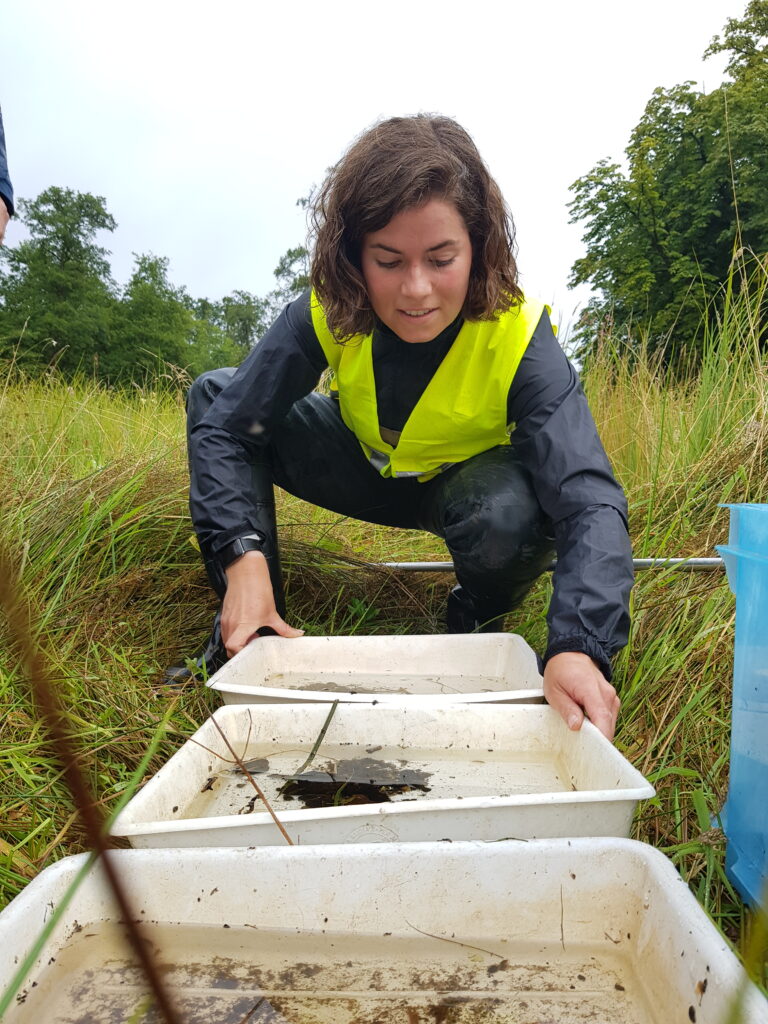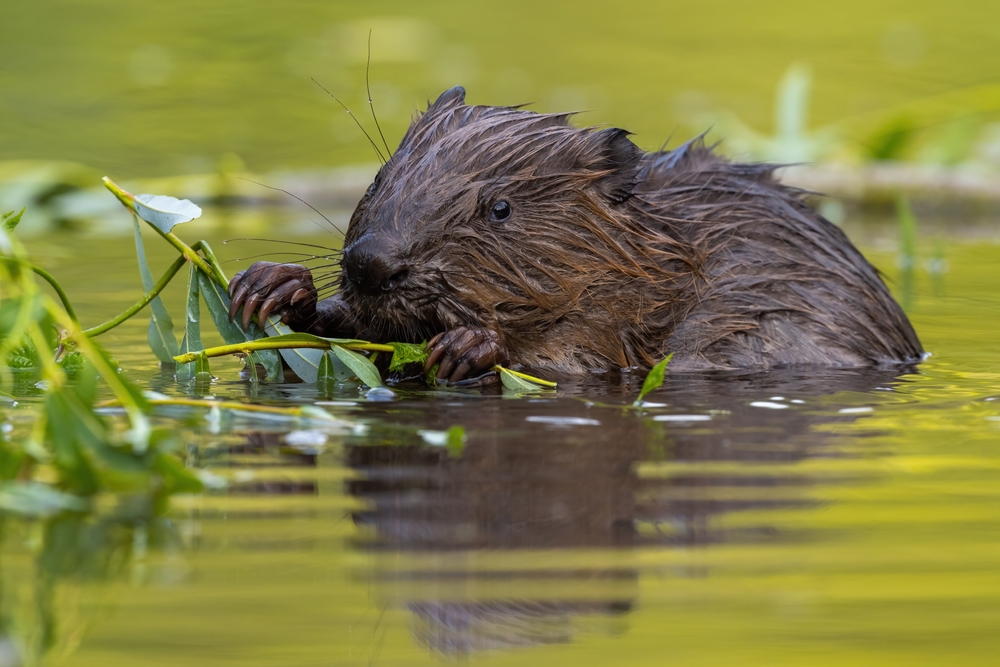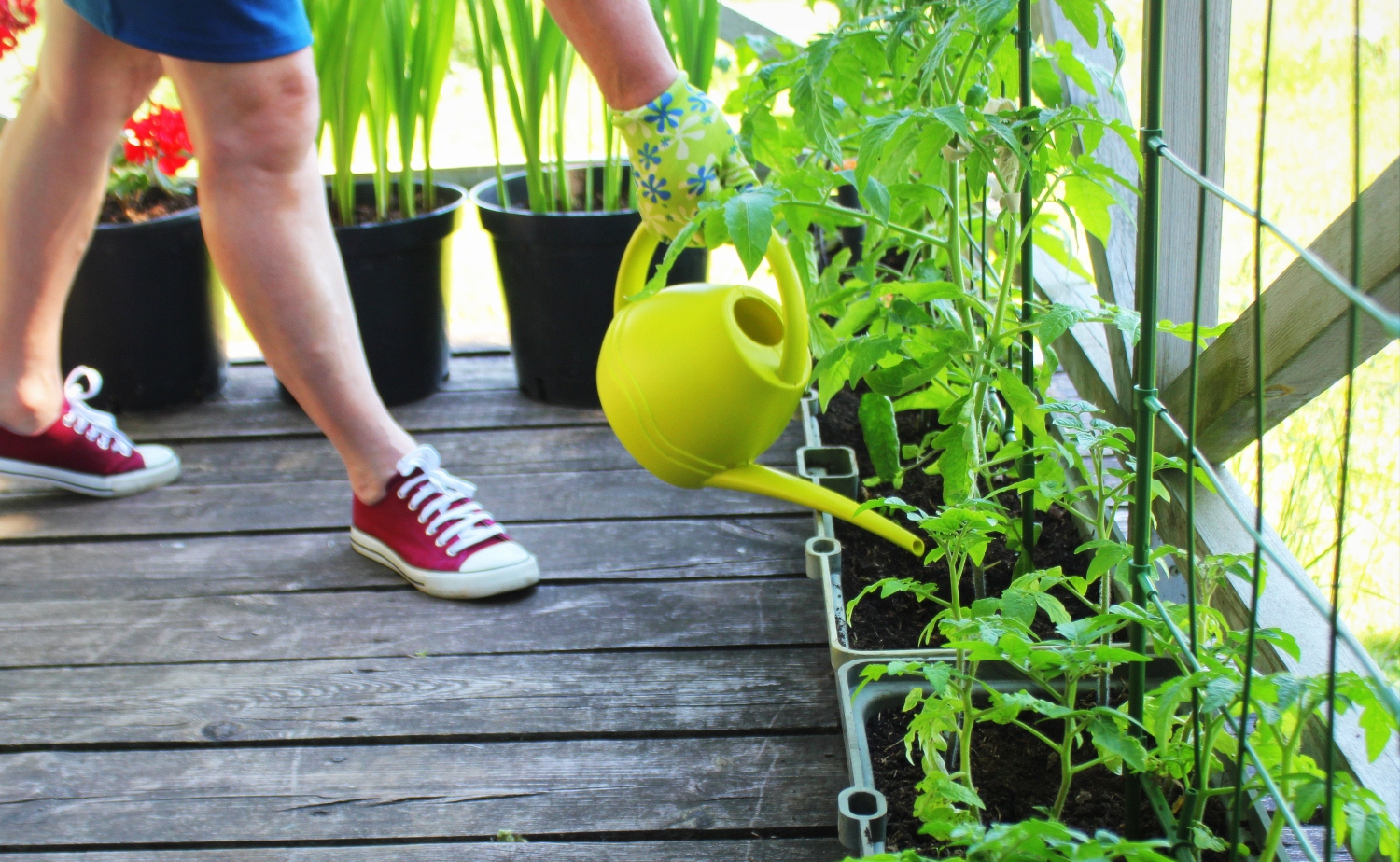There is a dam across a little stream in Oosterbeek. The dam itself is overgrown with plants and is barely visible. But its effect is clear to see. The water upstream is still, and downstream it is a tiny trickle. This is not the work of human hands, but of beavers.
Before 1988, the chances of seeing a beaver in the Netherlands were zero. Europe’s largest rodent had died out here, way back in 1826. Nowadays, you still won’t see beavers on a daily basis, but that’s not because there aren’t any. Since the successful reintroduction in 1988, the Netherlands has had a thriving population of beavers. In less than four decades, there numbers have grown to an estimated 6000. And still counting, says PhD candidate Britt van Zelst, who is researching the animal’s ecological and social impact in the Netherlands.
Beavers can help against climate change
The main reason you rarely see a beaver is that they are nocturnal creatures. During the day they sleep in their den, or lodge. It is this construction, and perhaps even more the dam that beavers build for their lodge, that makes them an iconic species. The only species that could inspire Van Zelst to commit to a four-year research project. She’s been crazy about beavers since she was a child. How come? ‘My first soft toy was a beaver. It seems I decided then that the beaver would be my favourite animal. He was called Basje.’
Sweden
Van Zelst did her Bachelor’s in International Land and Water Management. Her thesis was about the effect of beaver dams on water quality in Sweden. ‘That sparked off my interest in the beaver as the subject of academic study.’ She did a Master’s in Forest and Nature Management and then wrote a research proposal for a beaver study. For the past one and a half years, she has been working on figuring out ‘how humans and beavers can live sustainably side by side in an anthropogenic landscape like the Netherlands’.
‘My studies gave me an interest in the beaver’s effect on our managed nature,’ explains Van Zelst. ‘Beavers provide all kinds of ecosystem services. Studies in North America and Scandinavia show that they improve the water quality, they boost the biodiversity and they can help against climate change. In the vast tracts of nature there, they build huge dams, shaping the landscape in their interests. In our densely populated country, where the nature areas are also much smaller and more fragmented, we often don’t let them do that. Here it is humans who decide what the landscape looks like. My ecological question is whether and to what extent those assumed ecosystem services actually materialize here.’

Water level
Beavers build dams so as to create an underwater entrance to their lodges, enabling them to keep undesirable intruders out. If the water is too low, the beaver builds a dam downstream, causing the water level to rise. That is not always necessary in the Netherlands, though, says Van Zelst. ‘We keep the water level up with weirs, culverts and dykes. The level is often high enough, so there is no need for a dam.’ She focuses her research on the locations where a dam has been built, and studies its effects. ‘Beaver dams transform running water into an almost stagnant beaver pond, where sediment and organic material gets deposited and retained. That pond functions like a kind of filter, so the water downstream is cleaner that the water upstream, according to research in other countries. But does it work the same way here?’
The dam effect
Measurement data from the water boards seems to suggest there is such an effect, says Van Zelst. But the existing measuring points are often too far from a dam to enable proper monitoring of any effect. So Van Zelst is going to take her own measurements at 15 locations in Brabant and Gelderland. She will take water samples upstream and downstream, make an inventory of the flora and fauna present, and measure the speed of the current in the water. ‘That will give an impression of where interesting processes are going on. Depending on what I find, I am going to study that in more depth next year.’
The samples are analysed in the lab for their nutrients and resultant nutrient richness. ‘The idea is that if a dam filters the water, the system downstream is poorer in nutrients. I measure the amount of organic matter in the water and the kind of sediment that is deposited. I also look at the accumulation of heavy metals. All of that is related to the insects, fish, plants and birds that are present. I am also going to talk with nature managers and organizations about the question of how we can establish a sustainable way of living with beavers. What is their vision of the future, and what needs to change to realize it?’
Beaver Expertise Centre
The beaver is thriving in the Netherlands. Occasionally, that is a nuisance because beavers build and dig in places where that is not wanted. Like last year when no trains could run between Eindhoven and Den Bosch for a week because of a badgers’ set under the track. Van Zelst: ‘The badgers got into the news but next to their set was a beaver that was doing exactly the same.’ Beavers are a protected species. ‘We shall have to learn to live alongside them.’ And the Beaver Expertise Centre has been set up to that end.

 Photo Shutterstock
Photo Shutterstock 

